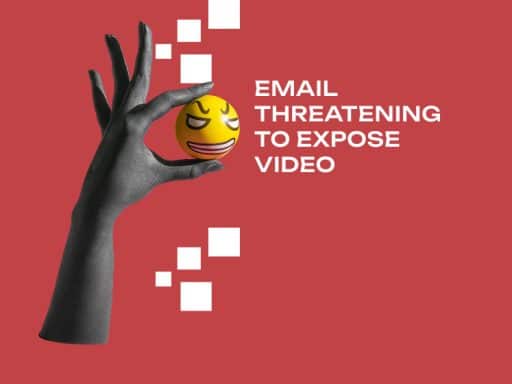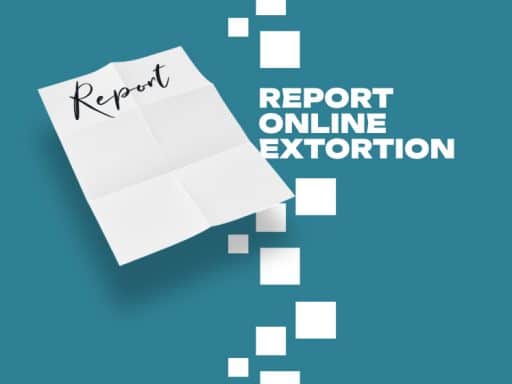Sextortion is a crime that takes more from the victim than their money and intimate images. It can do a world of damage to an individual’s trust, self-image, and mental wellbeing. This emotional toll is often felt far after the harassment has concluded and can leave the victim feeling like they have nowhere to turn.
Sextortion victims have to overcome a sense of fear, shame, helplessness, and isolation. It’s important to remember that sextortion is never the victim’s fault, and it happens to more people than you may think. 812 people report sextortion to the NCMEC per week(1), and those are only the cases that come forward.
In addition to those who have experienced what you’re going through, there are numerous resources available to help victims combat their sextortionist, report the crime, and return to normalcy in the aftermath. At Digital Forensics Corp., our experts are ready to help you remove harmful content, identify the offender, and provide pathways to recover from sextortion.
Emotional Support and Counseling Resources for Victims
As mentioned, sextortion can have long-lasting psychological ramifications that can be difficult to recover from, such as anxiety, depression, and PTSD symptoms. However, it is still very possible to regain control of your life post-sextortion. It’s natural to feel these emotions, but remember that it is not your fault, recovery is possible, and there is help available.
There are resources that are available for sextortion victims who need support, advice, or just someone to listen. They include:
- Rape, Abuse & Incest National Network: RAINN is the largest anti-sexual violence organization in the U.S. They operate the National Sexual Assault Hotline, which can be reached at (800) 656-HOPE (4673).
- Cyber Civil Rights Initiative: The CCRI runs a Crisis Helpline that connects victims of NCII abuse with companionate representatives who can provide guidance and support. You can reach the helpline at (844) 878-CCRI (2247).
- BetterHelp: BetterHelp is an online therapy service with more than 30,000 licensed therapists that have helped over 5 million clients. They aim to make therapy more accessible and affordable by offering their services online.
- National Alliance on Mental Illness: NAMI is the largest grassroots mental health organization in the U.S. They work to provide advocacy, education, and support for those struggling with mental health by spreading awareness and creating a community of care.
- Crisis Text Line: Crisis Text Line is a 24/7, text-based outlet that provides mental health and crisis intervention with a focus on empathy and judgement-free support. You can reach them by texting HOME to 741741.
- 988 Lifeline: The 988 Lifeline provides an around-the-clock call center for those suffering with their mental health to receive complementary and confidential counseling. You can reach the Lifeline by dialing the three digits in its name, 988.
Your school, employer, and community center may also have trauma resources available. Each case and each victim are unique, so consider all the available assistance at your disposal and decide which ones suit your path to recovery the best.
How to Get Nude Images or Videos Removed from the Internet
You will want to act quickly to get your nudes off the internet to mitigate damage and improve your sextortion recovery. Start by reporting them to the platform where they are posted. This can help remove both the content and the sextortionist’s profile and protect you and others from future harm.
You can learn more about reporting blackmail on specific social media platforms by reading these articles:
You can also have content removed or deindexed from Google search results by filling out a removal request form. To do this:
- Visit this link and select “Content contains nudity or sexual material” and your country
- Select the option that most appropriately describes your case and whether you were of legal age when depicted
- Provide all URLs and search terms that provide results containing the content and any additional information that provides context
- Submit your removal request
To find where your content may have been posted, you can analyze the metadata of the content or perform a reverse image search. NCMEC provides the “Take It Down” tool which uses hash-based matching to locate and remove your content and prevent future reposting.
DFC can also springboard your sextortion recovery with advanced takedown services, including dark web scans and third-party content hosts. You can learn more by reading our article on reporting sextortion.
How Digital Forensics Corp Helps in Sextortion Recovery
With DFC, you can feel assured that your case will be handled confidentially and with a victim-first approach. Our team of experts can uncover a sextortionist’s digital footprint and collect evidence such as IP addresses, behavior patterns, geolocation, and even devices used.
We’ve helped thousands of people in the same position as you reach successful sextortion recovery, ranging different demographics such as high-profile clients, minors, and international victims. Our focus is to remove your content from the sextortionist’s hands and preserve your reputation.
We document the entire investigation from start to finish to maintain the chain of custody and ensure your report is admissible for legal proceedings. Our connections with legal counsel and law enforcement around the world can help you take action against these criminals, no matter where they reside.
Preventing Sextortion in the Future
Unfortunately, the battle against a sextortionist extends further than just resolving the case. Cybercriminal dwell in every alleyway of the internet searching for their next victim, so you need to remain committed to avoiding their traps.
Practices you can implement to improve you online security and avoid future sextortion include:
- Safeguard Your Sensitive Content: If you decide to engage in sexual exchanges online, make sure the recipient is someone worth trusting. Never send explicit content, even in trusted relationship, if there’s risk of exposure.
- Enable Privacy Controls: Setting your account to private can prevent a sextortionist from reaching your profile and accessing your information. Turn off direct messages from people you don’t follow to restrict who can contact you.
- Use End-to-End Encryption and 2FA: Use messaging platforms that encrypt your conversations so they are only seen by you and the recipient. Additionally, utilize two-factor authentication whenever it’s available for an additional layer of account security.
- Educate Friends and Family: The world of cybercrime is constantly evolving. Stay up to date on common scams and red flags to improve your cybersecurity and spread your newfound knowledge with your close circle.
- Monitor Device Behavior: Monitor activity on your device for any unusual or unauthorized activity. Run reputable programs that scan for malware and look for camera or microphone abuse and unexplained downloads.
- Consider Using DFC: Digital Forensics Corp. can run digital security audits to pinpoint vulnerabilities in your system that a sextortionist may target.
If you take away anything from this article, it should be that you are not at fault and there is help available. Remember that you are the victim here, regardless of how the sextortionist came into possession of your intimate content.
If you are a victim of sextortion, now is the time to act. Reach out to our Sextortion Helpline today for a free consultation with one of our specialists and begin your road to recovery.
Sources:
DISCLAIMER: THIS POST IS FOR INFORMATIONAL PURPOSES ONLY AND IS NOT TO BE CONSIDERED LEGAL ADVICE ON ANY SUBJECT MATTER. DIGITAL FORENSICS CORP. IS NOT A LAWFIRM AND DOES NOT PROVIDE LEGAL ADVICE OR SERVICES. By viewing posts, the reader understands there is no attorney-client relationship, the post should not be used as a substitute for legal advice from a licensed professional attorney, and readers are urged to consult their own legal counsel on any specific legal questions concerning a specific situation.





